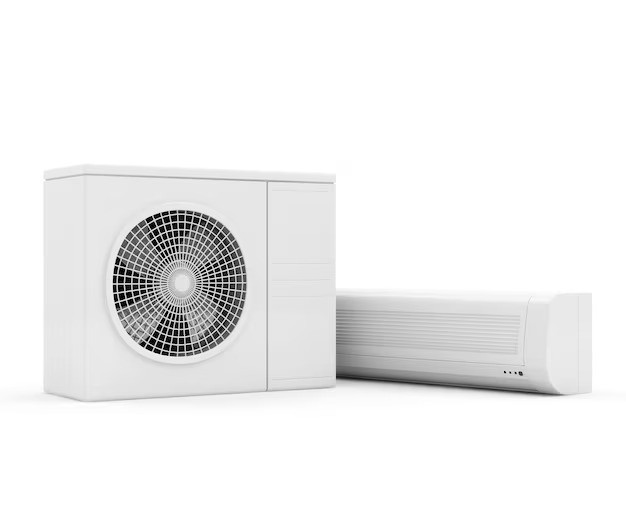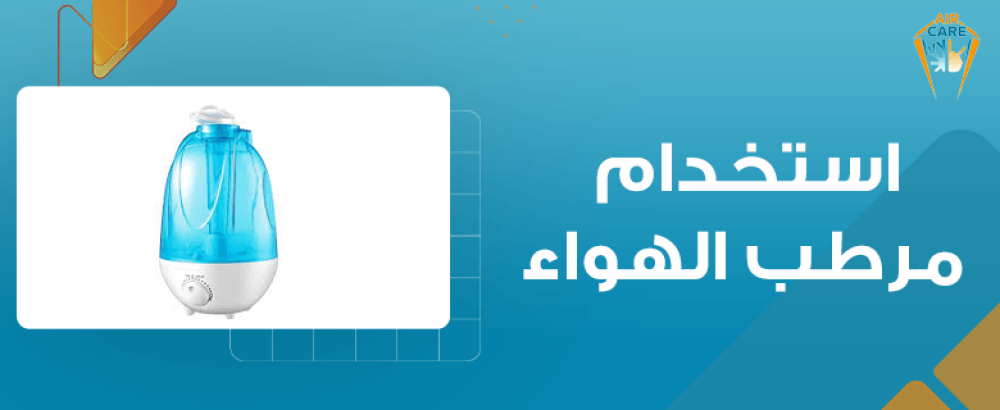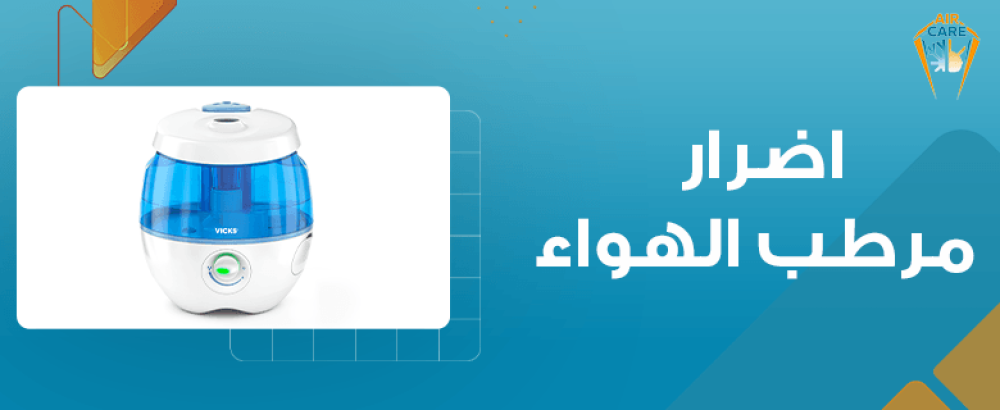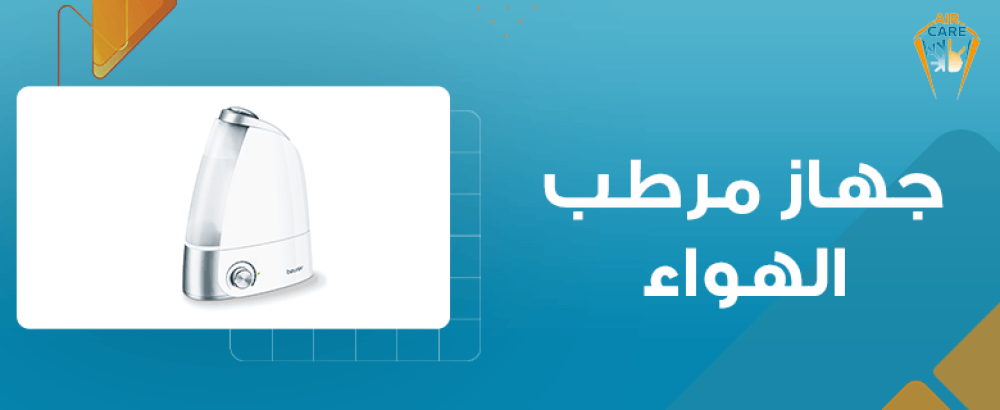- #استخدام مرطب الهواء
- #فوائد استخدام مرطب الهواء
- #مرطب الهواء للتنفس
- #مرطب الهواء في المكاتب
- #كيفية استخدام مرطب الهواء
Use a humidifier
Have you ever experienced a dry throat or chapped skin due to air conditioning or dry weather? Many people suffer from this problem on a daily basis, especially in homes and offices where everyone spends most of their time. Dryness not only affects comfort, but it can also make breathing more difficult and exacerbate certain health conditions such as allergies and colds.
Here, using a humidifier is a practical and effective option that provides you with a more comfortable and healthy environment. Not only does it alleviate the effects of dryness, it also helps improve sleep quality, protect your skin, and create a fresher atmosphere.
What are the benefits of using a humidifier?
Using a humidifier offers a wide range of health and comfort benefits at home or in the workplace. When the air is dry, the body's systems and the surrounding environment are affected in multiple ways, and this is where a humidifier comes in to maintain balance.
- It helps to humidify the air, protect the mucous membranes in the nose and throat, and reduce coughing.
- It relieves dry skin and reduces cracks and associated problems such as eczema.
- Keeps lips moisturized and relieves eye irritation in dry climates.
- It enhances the feeling of warmth and reduces the need to use heating devices excessively, thus saving energy consumption.
- Improves sleep quality by reducing snoring and throat irritation during the night.
- Reduces static electricity buildup and creates a more stable and comfortable atmosphere.
- Protects wooden furniture and books from cracking due to dryness.
- It helps reduce the chances of influenza viruses spreading when the relative humidity is maintained above 43%.
- Promotes overall health and quality of life when used regularly indoors.
How to improve breathing?
Moistening the air with a humidifier helps keep mucous membranes moist, reducing irritation of the nose and throat and relieving a dry cough. Proper humidity also reduces the risk of colds and flu and makes breathing easier, especially during sleep or during dry seasons.
What is its effect on the skin?
Skin is significantly affected by dry air, leading to cracks and dryness that can exacerbate conditions like eczema. Using a humidifier replenishes the skin with moisture, helping to maintain its softness and elasticity and reducing the signs of uncomfortable dryness.
Does it reduce eye and lip irritation?
Yes, proper humidity in the air alleviates dry eyes, which often occurs when air conditioning is used or during cold winter weather. It also reduces chapped lips and provides natural moisture, protecting them from inflammation and irritation caused by dry air.
How do I choose the right type of humidifier?
- Ultrasonic humidifier
- Working mechanism: Uses high frequency vibrating plates to produce cool, fine mist.
- Advantages:
- Instant and noticeable hydration.
- Low electricity consumption.
- It runs almost silently.
- Notes:
- It requires the use of distilled water to avoid metal dust.
- Requires periodic cleaning to maintain clean air.
- Evaporative humidifier
- How it works: It relies on a fan to pass air through a moist wick that acts as a filter.
- Advantages:
- A filtration system prevents impurities and minerals from spreading.
- Self-adjusting humidity.
- A safe option in homes with children or electronic devices.
- Notes:
- Filters need to be changed periodically.
- There may be some noise due to the fan.
Your choice between the two types depends on your daily needs. If you're looking for a quiet, energy-efficient device, an ultrasonic humidifier may be suitable, while if you want simpler maintenance and added protection from impurities, an evaporative humidifier is more practical.
What are the device efficiency criteria?
The effectiveness of a humidifier depends not only on its type, but also on a number of key factors that determine its suitability for daily use. The most prominent of these criteria are:
- Electricity consumption should be moderate to operate the device for long periods without high cost.
- Easy cleaning and maintenance ensures that the humidifier continues to operate efficiently and without problems.
- The size of the water tank determines how long the device will operate before it needs to be refilled.
- Noise level can be a critical factor if you use it while sleeping or in the living room.
- The presence of digital control systems or water level indicators helps in convenient use and continuous monitoring of the device's efficiency.
Does maintenance affect the quality of use?
Yes, maintenance plays a vital role in maintaining humidification quality and air purity. Using distilled or demineralized water reduces the chance of impurities accumulating inside the unit. Regularly cleaning parts that come into contact with water also reduces the growth of bacteria or mold. Filters should be replaced every one to three months, according to instructions, to ensure continued humidification efficiency.
It is also important to place the humidifier in a high, well-ventilated area away from electronic devices and wooden surfaces so that it operates safely and at peak performance.
How do I use a humidifier safely and efficiently?
- The tank must be emptied daily of any remaining water before refilling.
- It is recommended to wash it with mild soap and water, then rinse it well to remove any residue.
- Drying the tank after cleaning helps prevent mold or bacteria from forming.
- Every few days, the tank can be sterilized with a diluted vinegar solution or hydrogen peroxide, making sure to rinse it thoroughly before use.
- Filters are usually changed every 1–3 months or when dirt buildup is noticed.
- It is necessary to disconnect the device from the electricity before starting any cleaning process.
What is the correct way to fill the tank?
To ensure efficient and safe use of your humidifier, always fill the tank with clean water, preferably distilled to reduce mineral deposits. After emptying the tank of old water, refill it with the appropriate amount, ensuring the cap is tightly closed.
How do I monitor room humidity?
To determine the effectiveness of a humidifier's operation, it's best to use a hygrometer. It's recommended to maintain a humidity level between 30% and 50% to avoid dry air or excessive humidity, which can cause problems like mold growth. It's also important not to run the device continuously without monitoring the relative humidity.
What precautions should be taken when operating?
- Do not place the device directly on wooden surfaces or close to a wall to avoid damage to furniture or moisture accumulation.
- Operate in a well-ventilated area and keep out of reach of children.
- Unplug the device from the power supply when not in use for a long period of time, and ensure that it is stored clean and dry.
What are the best home humidifiers?
Air Care Trading Company offers a diverse range of modern home appliances, offering an exceptional shopping experience with the latest products carefully added to meet your home's needs and combine comfort and quality. The Air Care Appliances section includes :
Black & Decker HM6000-B5 Decor Humidifier
The Black & Decker HM6000-B5 Decorative Humidifier features a sleek cylindrical design with a wooden base that adds a modern touch to any room's decor. It has a large 6-liter tank capacity that allows it to cover large areas without the need for frequent refills. It features ultrasonic technology for quiet and efficient operation, with a digital interface for precise humidity control. Additionally, it features a water level indicator and an automatic low-water shutoff feature for safety and convenience.
HM3000-B5 Ultrasonic Humidifier
The HM3000-B5 ultrasonic humidifier is a practical choice for maintaining humid air in bedrooms or offices, thanks to its convenient size and 3-liter tank capacity. It can operate for 8 to 14 hours depending on the selected power setting. It features a built-in filter that filters out impurities, and the mist intensity can be controlled with an easy-to-use rotary switch. It also features a rotating top nozzle for optimal mist distribution, as well as a small shelf for adding essential oils to diffuse a refreshing scent.
Black & Decker HM5000-B5 Humidifier
Designed for practicality and style, the Black & Decker HM5000-B5 Upright Humidifier in white boasts a 5-liter capacity that can cover rooms up to 40 m². It offers long-lasting performance, providing continuous comfort throughout the night without needing to be refilled. The top diffuser ensures even mist distribution, while the transparent water level indicator clearly displays the water level. It also helps reduce dust and some bacteria, with a plastic exterior that's easy to clean and maintain.
How do I keep my humidifier working efficiently for a long time?
To maintain the efficient and safe performance of your humidifier, it's important to clean the tank daily and rinse it thoroughly after each use. It's also recommended to perform a deeper cleaning using vinegar or a suitable disinfectant every 3 to 7 days to prevent bacteria or mold buildup inside the unit. When not in use for an extended period, dry it completely before storing it to avoid unpleasant odors.
What type of water is best?
Choosing the right type of water plays a significant role in the efficiency of your humidifier. Using distilled or demineralized water reduces sediment buildup inside the tank and prevents white dust from appearing on surrounding surfaces. This type of water also helps prolong the life of the unit and reduce malfunctions caused by calcification of internal components.
How do I deal with filters?
Filters and absorbent materials require constant maintenance to maintain clean air. It's important to replace them every 1 to 3 months, depending on the device's instructions and the degree of use. It's advisable to inspect them whenever you notice any changes in air quality or reduced air flow. Also, don't store used filters or reuse them at the beginning of a new season, as this can cause odors or pollutants to spread into the air.
Using a humidifier provides a simple and effective way to maintain respiratory health and skin moisture in dry climates. It also contributes to improving sleep quality and enhancing daily comfort, especially when choosing the right device and maintaining it properly.








